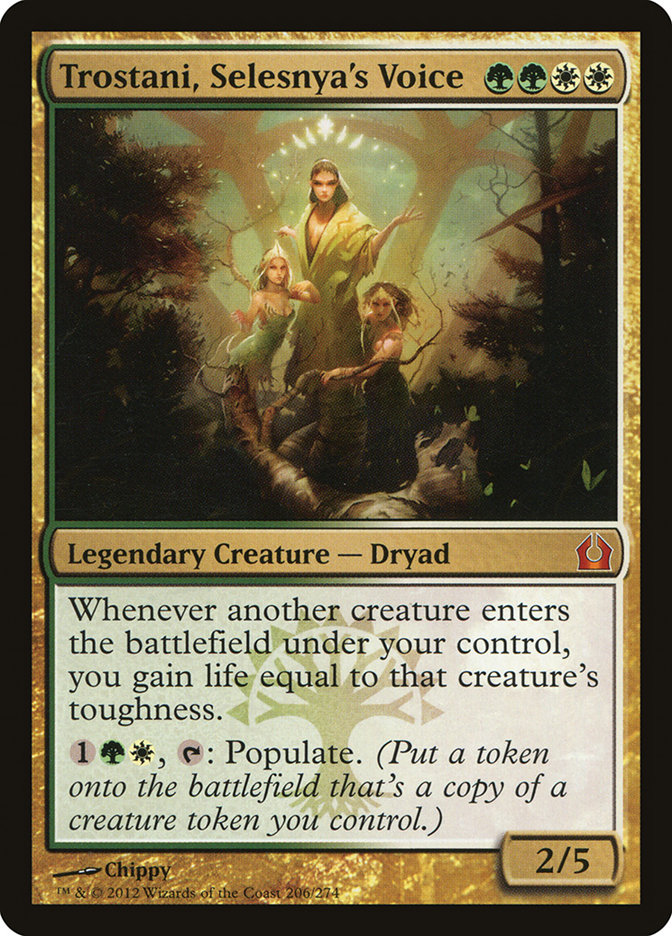Roon is a challenging Commander, because he asks you to thread the needle as far as power level is concerned – he feels a fair bit like a potential Deadeye Navigator as your Commander, which is sure to draw attention and lead to opponents wanting to mess with your stuff just as a default rule, so we have to be strong enough to survive being messed with while also staying away from the “overpowered” mode that is all too easy to run into (and thus earn that ire every game forevermore).
Not breaking something is harder to do than breaking something is – after all, with just an Intruder Alarm and some creature-based mana, Roon goes infinite and blinks whatever you’d like over and over ad infinitum. Showing people that you’re not aiming to go Full Broken is harder than it sounds like it should be, especially with a aommander that potentially has a combo piece built-in already, and one of your questions – whether you should add Venser, Shaper Savant or not – leads us down the unfun path and makes it harder to prove we’re here to have a good and interesting game, not just a powermongering game where we win thanks to blinking cardboard. Draining Whelk is even further down that path, which is a shame because I’ve had a lot of positive experiences with that card in this format, but we need to shy away from degenerative lock-down conditions, not just infinite combos, if people are to believe us when we say we’re here for some good clean fun.
A deck can still scrap hard within those good-clean-fun boundaries, and that’s what we’re going to aim for here today. Let’s begin at the beginning by dissecting your manabase:
Out:
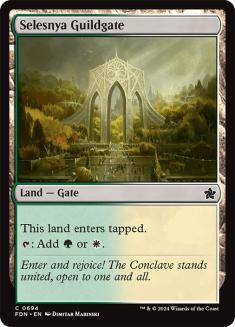
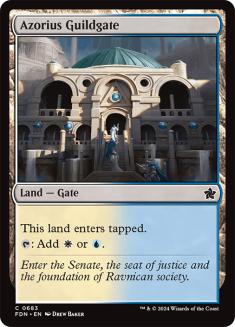
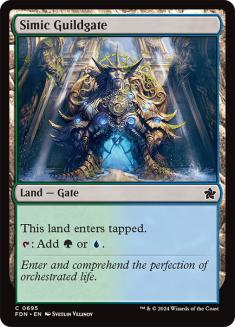
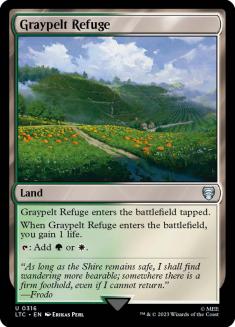
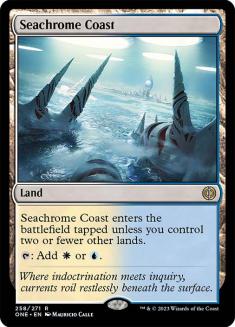
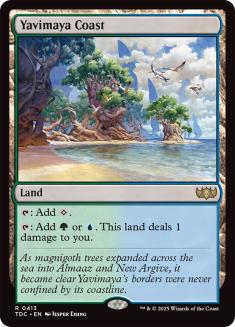
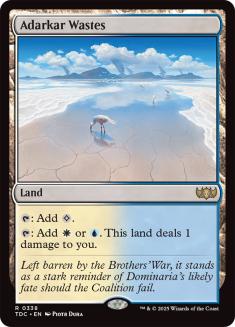




We’re mostly just playing the cycle-completion game here, taking some of the lands you’re already playing and expanding them into full cycles where available – and where that cycle is just better cardboard. I want a little bit more interesting stuff going on, too, while we are at it, so a little room needed to be made by cutting some of the basic lands. Sheldon recently wrote about how he didn’t feel manabases were so important that you should put a lot of resources into them, but I disagree at least a little bit in fundamental concept, or perhaps I disagree in that my estimation of this has a clear caveat to it – when you’re a newer player and don’t necessarily have a deep box of Commander staples ready to go through for deckbuilding purposes, with near to two decades worth of greatest hits to choose from, it’s very important to pick up high-quality staples as they come into Standard, and thus, I am going to advocate for a higher budget than I usually shoot for here, to fit in expensive staples you’ll eventually be able to pick up just by drafting enough. You already have two fetchlands (though I’d happily trade either of them for a Misty Rainforest for your deck) and all of the Return to Ravnica shocklands, so adding Windswept Heath and Flooded Strand when Khans of Tarkir comes out will be very valuable to you in the longer term of the game… and it’s something you can do without having to spend money given a long-enough time-scale to complete that objective.
So, we add the following even though some of these are expensive:
In:
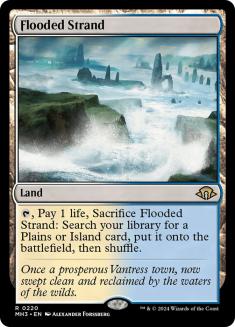
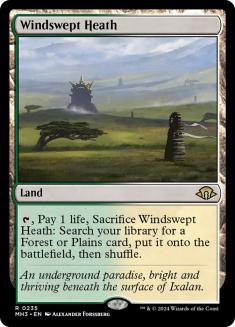
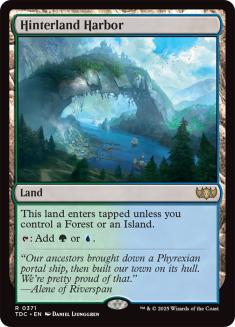
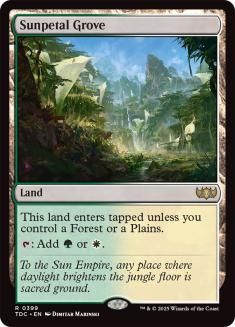
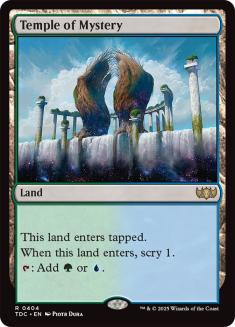
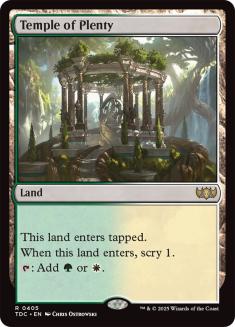
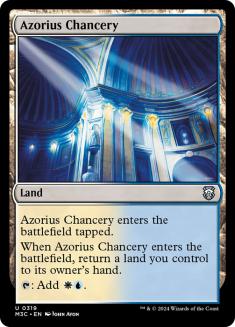
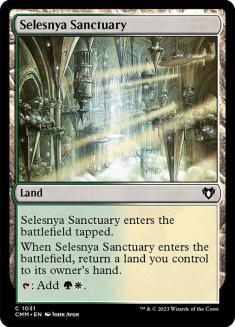
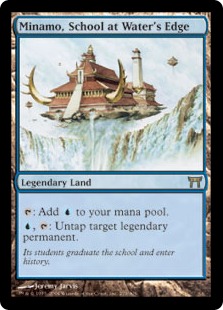
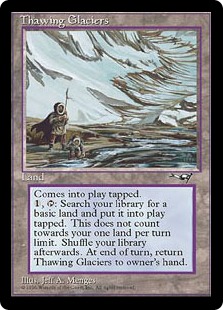
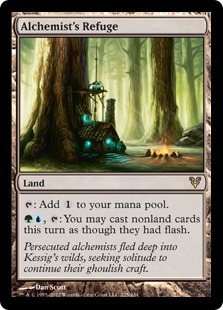
Minamo is obviously awesome with Roon, letting you get an extra blink each turn cycle just from a part of your manabase, and I can’t say enough nice things
about lands like Alchemist’s Refuge or Winding Canyons that let you play your creatures on opponents’ turns, as they let you delay in making decisions
until you know absolutely what you have to do – and help you dodge opposing sorcery-speed sweepers by not playing cards until right before your own next
turn, so you’ll always be able to at least untap with them and get to use them fully once before they bite it to a Wrath effect. The fetchlands and Temples
are key cards to potentially have picked up for Standard anyway in the next few months, in addition to being better than the lands you were already
playing, while the rest are cheap enough that the little bit of expense it will take to find the replacements is well worth a bit of budgeting. Thawing
Glaciers and Minamo are pretty expensive, it’s true, but they’re strong enough that they’ll really help you out over the course of a game – Minamo’s free
untap will provide some portion of a card’s worth of value each turn thanks to Roon, while Thaw is a free land every other turn, letting you build up
resources without spending a lot of cards to do so. You’re light on non-Blink-based card advantage, so having a solid way to get into the middle of the
game thanks to card advantage is a welcome addition to the deck.
Moving on to the artifacts, well… you don’t have any artifacts, besides the Conjurer’s Closet, and we’re clearly not cutting that since it does exactly
what you want to do, and for free. I do have two additions to make as I’ll be cutting from your spells a little bit as I move things around,
letting us add two cards that will serve you very well here:
In:
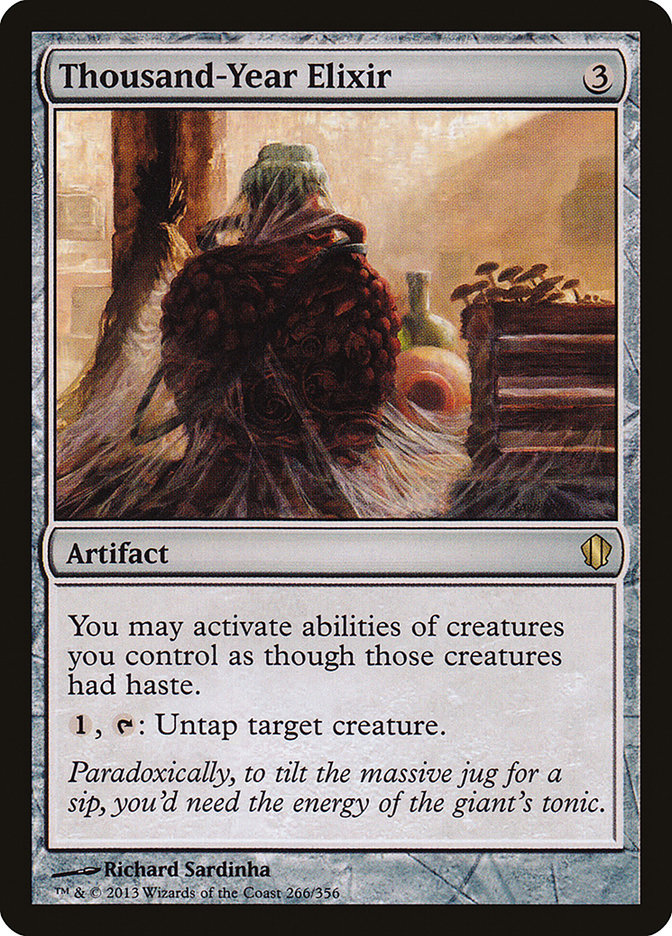
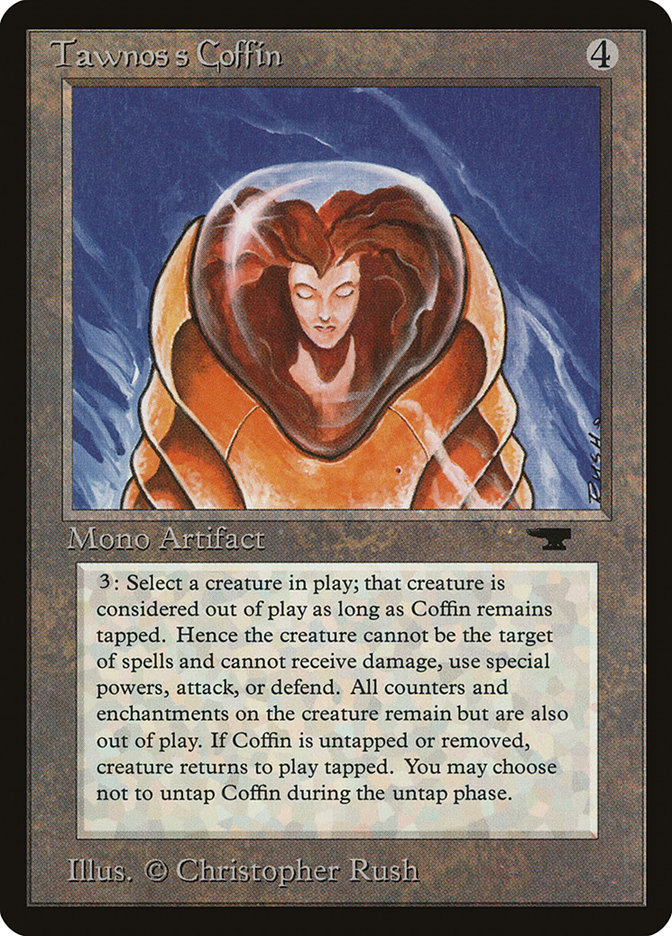
Thousand-Year Elixir lets you use Roon immediately and gives you a second use as well, allowing you plenty to work with whenever you draw it.
Tawnos’s Coffin, however, needs a bit of explanation – mostly because what the heck is a “Mono Artifact” anyway? This is actually me channeling my
inner you – I started playing Magic when I was right about your age (… and because I’m old, I mean “in 1995”), and I had an immediate fascination for the
odd and exotic cards from the first few expansions because no one I knew had even so much as seen all of them, so finding things from Arabian Nights,
Antiquities, and Legends always sparked my imagination and made me want to figure out how to put these strange cards to work.
(This also led to my deciding to spend probably-stupid, but now by comparison, ridiculously-small sums of money buying Legends and Antiquities packs in
hopes of opening good cards instead of having to rely on trading for them – sure, people made fun of me then for buying Legends packs for $18
each, but it appears the only mistake I was making was opening them – the SCG Store is sold out of them at $150 each today! Sadly, it also led to
my worst trade ever – I was a total n00b and didn’t know my copy of The Abyss was an expensive card, or even “what cards were any good,” so when someone
offered me the Al-Abara’s Carpet, Scarecrow, and Alchior’s Tomb I was eyeing in their binder, I jumped at the deal to supercharge my Lace deck and become
completely invincible to combat damage thanks to the “combo” of Al-Abara’s Carpet + Scarecrow.
You’re probably much better at Magic at your age than I was at your age. Let’s just put it that way.)
Tawnos’s Coffin is effectively a blink machine – spend three mana and you stuff a creature of your choice into a temporary Oblivion Ring, and all you have
to do to end that effect is to untap the Coffin on your turn. The really cool part thanks to obscure timing rules is that the return-to-play
effect should still trigger during your untap step – when people normally can’t play spells or activate abilities, so your triggers will be able to go on
the stack and resolve without opponents being able to interact with them. I’m not exactly certain that this is true, but if so it’s even fancier
than expected because it lets you get around people’s protective effects and preventative measures. (Surely someone with firmer rules knowledge will
volunteer it in the comments, clarifying as to whether the trigger delays to your upkeep step or whether such a trigger in your untap step would allow us
to break the normal timing restrictions on responses.) Regardless of that, the card’s able to let you repetitively blink things just like your Commander
wants to, and thus lets you play your blink-game even more than before.
If you wanted cheaper options, be it permanently or just temporarily as you considered whether finding this old odd thing is worthwhile, both Crystal Shard
and Erratic Portal can stand in its place with reasonable effectiveness, as returning a creature to your hand for re-casting is similar enough to blinking
it that it’ll suffice in a pinch. Getting around putting a spell on the stack where it can be countered, and getting around spending the full mana cost of
the card instead of the Coffin’s activation cost of three mana, is worth it to me to want to hunt down the odd old thing – but if that’s simply not a
possibility (as it might be if that thing were in Standard, such as the fetchlands I suggested above) then it is what it is. You said you liked my article
series because it introduced you to new (old) cards you hadn’t seen yet that might work for the decks that interest you, and this card is exactly that.
Moving on to your spells, we’re going to cut pretty deeply into them – I like repeating blink effects, but I don’t like single-use spells that
blink your creatures and do nothing else, the hope is that over the course of the game those spells would be made redundant, so I’d rather fit in more
useful slots instead.
Out:
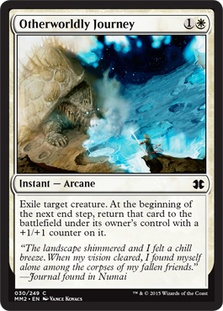
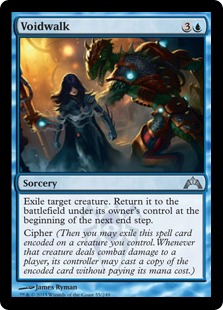
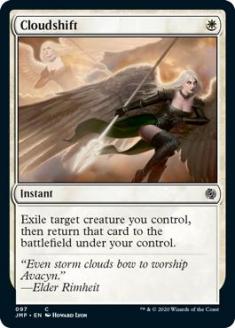
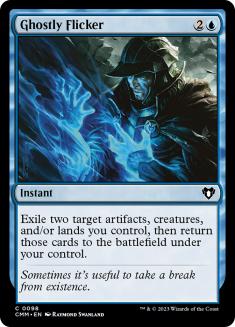
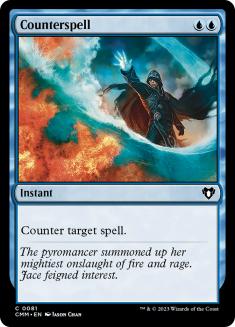


In:
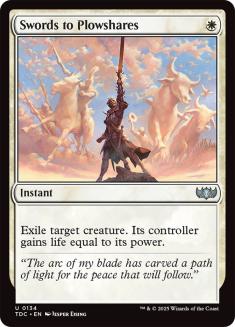
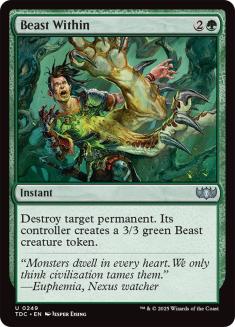
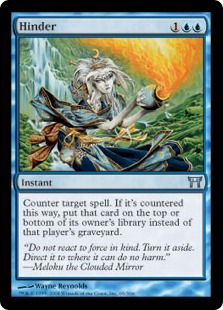
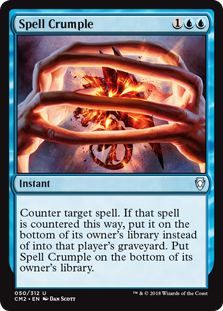
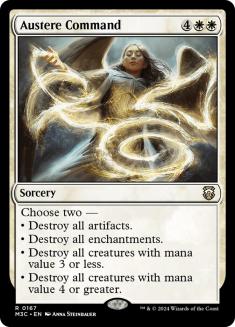
Austere Command is just too good to ignore, especially when you are yourself going to be enchantment- and artifact-light as a general rule. I wanted access
to a sweeper at least sometimes so that you have a technical out to any problem situation, but not so many of them that it would regularly lead to you
Wrathing creatures off of your own board – so that meant finding room for just the most flexible of the sweepers, and relying on comes-into-play triggers
and support spells to handle other problems. Cue Beast Within and Swords to Plowshares instead of blink cards, then – Beast Within pairs nicely with your
Oblation to handle any problem permanent at a reasonable price, while Swords lines up neatly alongside your Path to Exile to kill whatever needs killing
for the low, low price of just one mana… no questions asked, no if’s, and’s, or but’s. Those last two slots let us upgrade your countermagic from two
pieces to three, and we replace the non-cantrip Counterspell with the slightly more expensive Spell Crumple and Hinder – that one additional mana lets it
permanently handle spells or creatures that might be recurred from the graveyard and keeps a problematic Commander out of play by tucking it into
a library, letting you shut down problem opponents with a powerful counterspell instead of letting them just re-cast their Commander again and repeat that
same problem you were trying to stop in the first place.
Beck // Call got cut because it is one of those cards that massively forces people to question whether your deck is at the power level they think
it is (and that you’re trying to positively represent it at, so as not to draw undue ire from people who think you’re gaming at a higher level of
combo-liciousness than you really are). This is either going to ‘just’ draw you two or three cards over the course of a turn or see you sort of go
off a little and become a huge target if you’d been flying below the radar beforehand – and that will have a trickle-over effect onto your future
games as well, if this card is ever actually any better than a Divination would have been. And Recall gets cut due to not being as good as you think it is
– you’ll get a lot more for your cardboard from an Eternal Witness than you will from Recall, as I well know as it is one of those fancy oddments I pursued
back in the forgotten mists of time. I’ve actually been trying to make it work ever since, and did just pick up a copy for my Commander Box of Doom in case
I ever find a home for it, but I’m pretty sure the only real home for it is a Melek, Izzet Paragon deck or something of its ilk – fair decks won’t want it,
it won’t be good enough in the average Commander build, and for the same mana cost and not discarding two cards you could opt for the uncommon
Restock from M15 for good effect.
Since you aren’t really going to have a lot of countermagic to trade one-for-one with opposing spells, you would really benefit by making those few spells
the most powerful ones you can in the context of the format, even if they are a wee bit more expensive cost-wise than basic Counterspell is. And those two
missing slots we’ve already covered as they moved over to the artifacts section – so we’re ready to move onto your creature base for strategic blink
purposes.
Out:
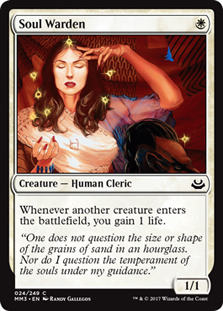
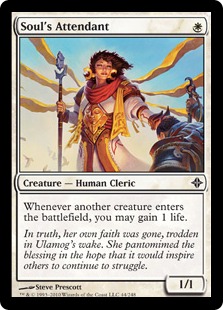
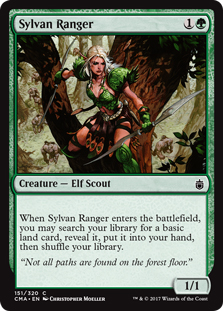
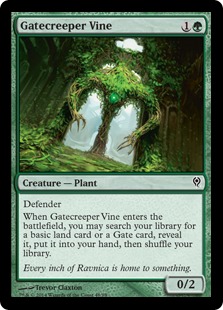
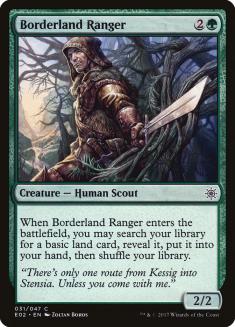
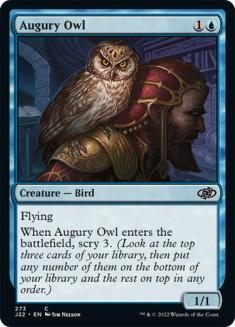
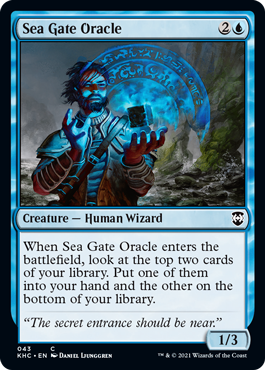
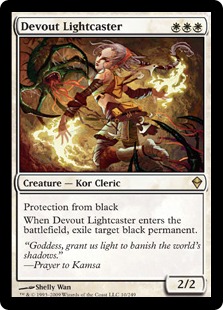
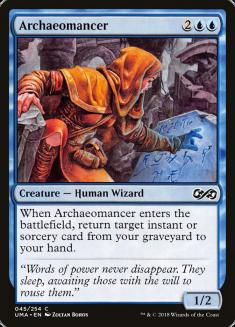
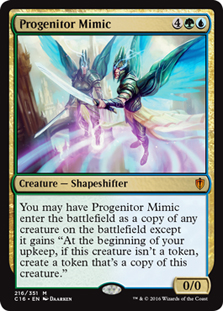
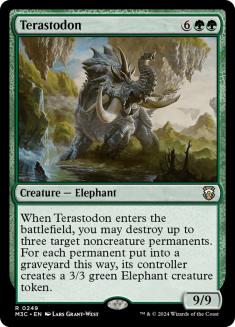
In most of these cards’ cases, I thought you were just getting too little effect for your unit of cardboard. I dislike lifegain in small doses – if I’m
paying mana and cardboard, it has to be enough lifegain to make me think it’s actually worth those very real costs to obtain it – and I would rather put a
card in my hand than put a land in my hand, so the cheap manafixing creatures were swapped out because I’d never really want to blink them anyway. Mnemonic
Wall may get the same cards as Archaeomancer does, but I consider an 0/4 body to be better than a 1/2 body, and I didn’t really want to be doubling up on
that type of effect given that you’re actually quite spell-light and won’t necessarily have a lot of targets – but more problematically, that leads to a
potential Counterspell-lock loop, so I wanted to cut back on that access considerably.
I’d wanted to build in a gain-control-and-blink theme, using the loopholes that Deadeye Navigator and Restoration Angel both allow in that their blink
effects return cards specifically under your control, not to their owners’ controls. Suddenly this was a Rubinia Soulsinger / Vedalken Shackles /
Overtaker deck looking to play with this rules-space… till I kept reading the rest of your cards and realized that either I had to pair the control cards
with specific blink effects or give up on both of them at the same time. Things were going in a goofy direction, but the number of blinkers that actually
return things specifically to your control rather than their owners’ is very small, and made it hard to justify things that didn’t really feel like they
otherwise fit.
Adding back in, we bring the following creatures onto your team:
In:
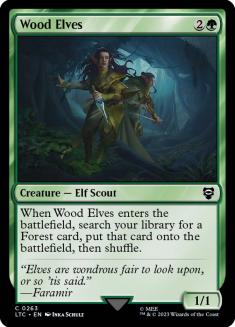
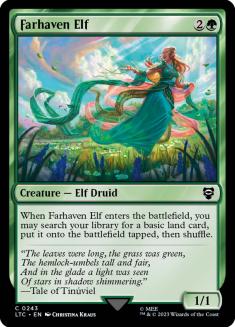
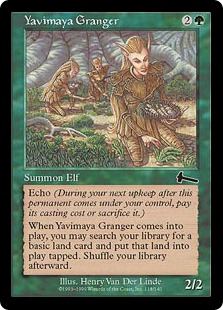
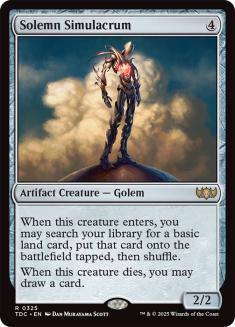
Rather than put lands into your hand, I’d much rather blink things that put lands into play. It’s not the most imaginative upgrade, I’ll confess, but that little bit of repeating ramp is going to be more valuable than the little bit of mana saved by playing cards that were one mana cheaper. I can get behind blinking these with Roon in the middle stages of a game, and where Gatecreeper Vine was able to get Gates instead of basic lands, Wood Elves can get nonbasic Forests – your Breeding Pool and Temple Garden. Sure, it can’t get Hallowed Fountain, but it also puts the land right into play instead of asking for your land drop – which prevents us from following down the line of thought that leads you to wanting to add Exploration to your deck, since you’re not really built to use it especially well and a fair bit of the reasons you might have wanted to involved blinking critters that put land in your hand. We kill two birds by swapping in critters that put them into play directly, and voila – problem solved.
Another high-price card that I feel like I can get away with suggesting because it is a potent Standard staple, and thus something you may very well be
inclined to get your hands on anyway with the far-from-unlimited resources available to you – the price tag is excused by the fact that you’ll likely play
it at any FNM’s or other Constructed Magic events you’re likely to play over the next year, and it shouldn’t be hard to trade for because staple cards are
plentiful to find (even if they are a bit expensive to afford). I said I didn’t like little bits of lifegain and that’s still true, and you would have
gotten considerably more life from a Soul Warden thanks to opposing creatures than you will from a Courser – you’re not really a ramp-y deck, so your
landfall triggers will tend to be at or near one land per turn still. But the power comes from being able to play cards off of the top of your deck,
letting you hit more land drops more readily thanks to accessing this other zone as a potential resource.
Oracle of Mul Daya was clearly powerful enough for you to include it despite being one of the few cards not on-theme in one way or another, in your
“Utility” section. Courser gives you the same access to that alternate zone (though without the super-potent free second land drop each turn) and thus lets
you get there more consistently, and between these two creatures and that Thawing Glaciers you should be able to leverage some free resources in enough
games to make things easier on you but not in so many games that people notice you’re always doing that thing and try to penalize you for
it with judicious applications of vigorous combat phases. We’ll supplement all of that with some bounceland action to provide an extra free land
(effectively) in any game you draw one and those four mana-ramp creatures you can Blink that we added above, so that you’ll likely have something
extra to work with besides having to play a card from your hand for each mana you want to get out of lands you put into play.
In: Trostani, Selesnya’s Voice
You can’t really use the populate very much – just Thragtusk, Armada Wurm, and Trostani’s Summoner make tokens that you could duplicate – so this is really here for the industrial-grade lifegain that it offers. Instead of a point per creature that comes into play, you’ll gain life equal to the full toughness of whatever it is you’re casting or blinking, and even better it doesn’t involve a 1/1 that you cast staying in play without dying. This can’t come down quite as early as either of the two creatures we cut from this effect’s slots, but it makes up for it in sheer bulk instead. (And who knows – maybe you will get to Populate sometimes too – it won’t happen often since we’re not really tutoring, but it could happen.)
In:
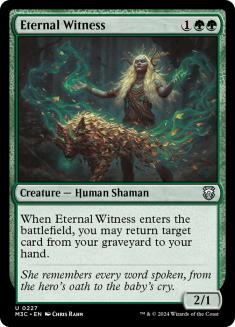
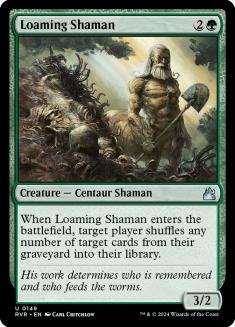
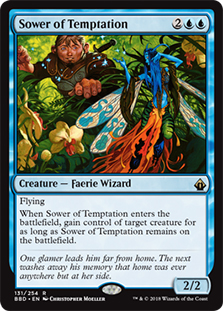
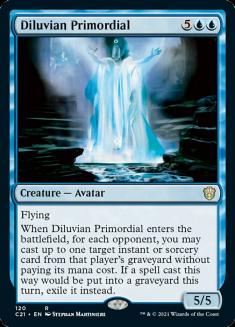
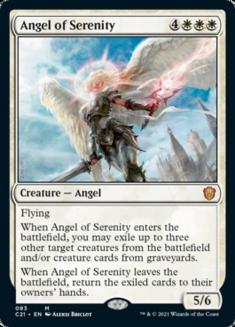
Our last additions are more fun blink targets; we changed Archaeomancer into Eternal Witness in acknowledgement of the fact that the large bulk of your
cards are lands or creatures, and having more flexibility in targeting what you’re recurring is an important upgrade. Sower of Temptation is a holdover
from when I was focusing this more on creature-stealing for profitable blinking later, and it just happened to be awesome regardless of whether
you were pulling off the perma-steal with it or not. Being able to blink in at various times and gain control of the best creature in play at-will is a
potent ability, and it doesn’t hurt that this plus a lot of mana plus Deadeye Navigator is absurd (-ly fun. For you anyway). Blink the Navigator, soulbond
with the borrowed creature, blink the borrowed creature and you get to keep it regardless of what happens to the Sower… blink the Deadeye Navigator,
soulbond with the Sower, and blink the Sower to steal something new. Like I said, “fun.” But only for you.
Even without that, just getting to reset it over and over again lets you steal something and trade it off then steal something new, or even just upgrade
what you’ve stolen as something better comes into play.
Loaming Shaman is a powerful way to interact with recursion, and thanks to blink tricks you can set it up over and over again to hose those pesky mages who
try to stock their graveyards and crush you with the riches they assemble there. This isn’t a color combination that is really great at containing the
graveyard – sure, anyone can play Relic of Progenitus, and white can play Rest in Peace if you want to, but the best cards for interacting with an
opponent’s graveyard profitably or cheaply are all black. Having a solid card that solves the problem no matter how large its scale for just a bit of mana,
then can be recurred to do it over and over again, is a potent addition to your team.
The last two choices go big: Diluvian Primordial replaces Terastodon here because Terastodon is literally no fun at all for anyone, especially not
the second or seventh time around, and people bear grudges for stuff like this (as well they ought). We’re sacrificing Terastodon to the needs of the Fun
Police, as anyone who tries to reuse (or even just reanimate!) Terastodon gets a black mark against their reputation that will take forever to work off,
and it’s better to make sure people are having fun games while you’re winning than to win with the most powerful card possible. Instead we add Diluvian
Primordial, which is comparatively strong without being comparatively feel-bad; Diluvian Primordial will solve problems while providing card advantage, and
in the case of stocked graveyards may just end the game right there, unlike Terastodon who drags things out even though you’ve effectively already achieved
your win condition.
If Diluvian Primordial’s so good once that it can just win the game sometimes, imagine how good it must be to repeat as-needed! And since you’re
casting your bonus spells out of your opponents’ graveyard, they really have no one to blame for whatever power cards you get – after all, they tried to do
that first. And when it comes to huge scale and potent recursion, Angel of Serenity takes things to an entirely different plane of reality, she doesn’t
just go big, she goes super-big. Thanks to timing tricks you can use Roon to permanently exile the three cards if that is what you want to do; blink an
Angel with the enters-the-battlefield trigger on the stack and choose “yes” for that ‘may’ ability, and the cards will never return no matter how you
cajole them. And if drawing cards / buying back threats is what you need, you can’t beat choosing to put three of your creatures under it from the
graveyard and then blinking it out to serve other duties, putting fresh resources back into your hand much like that Recall we chose to cut earlier.
It serves as your Wrath stand-in effectively, gets better with your Commander online, and can be used as card advantage in a pinch – this is a stellar
addition that covers a good chunk of the holes I was worried about, and is a blast to play besides.
Putting it all together, we get the following:
Creatures (48)
- 1 Solemn Simulacrum
- 1 Wall of Blossoms
- 1 Wood Elves
- 1 Eternal Witness
- 1 Silverglade Elemental
- 1 Yavimaya Granger
- 1 Karmic Guide
- 1 Indrik Stomphowler
- 1 Loaming Shaman
- 1 Deadwood Treefolk
- 1 Mistmeadow Witch
- 1 Galepowder Mage
- 1 Masked Admirers
- 1 Mulldrifter
- 1 Sower of Temptation
- 1 Farhaven Elf
- 1 Woodfall Primus
- 1 Flickerwisp
- 1 Wistful Selkie
- 1 Elvish Visionary
- 1 Acidic Slime
- 1 Oracle of Mul Daya
- 1 Ondu Giant
- 1 Wall of Omens
- 1 Frost Titan
- 1 Garruk's Packleader
- 1 Obstinate Baloth
- 1 Sun Titan
- 1 Glimmerpoint Stag
- 1 Suture Priest
- 1 Brutalizer Exarch
- 1 Stonehorn Dignitary
- 1 Sphinx of Uthuun
- 1 Restoration Angel
- 1 Deadeye Navigator
- 1 Archaeomancer
- 1 Thragtusk
- 1 Lyev Skyknight
- 1 Trostani, Selesnya's Voice
- 1 Angel of Serenity
- 1 Azorius Arrester
- 1 Armada Wurm
- 1 Diluvian Primordial
- 1 Prime Speaker Zegana
- 1 Luminate Primordial
- 1 Trostani's Summoner
- 1 Courser of Kruphix
- 1 Brago, King Eternal
Planeswalkers (1)
Lands (37)
- 6 Forest
- 5 Plains
- 1 Thawing Glaciers
- 5 Island
- 1 Minamo, School at Water's Edge
- 1 Windswept Heath
- 1 Flooded Strand
- 1 Krosan Verge
- 1 Selesnya Sanctuary
- 1 Temple Garden
- 1 Azorius Chancery
- 1 Breeding Pool
- 1 Hallowed Fountain
- 1 Simic Growth Chamber
- 1 Glacial Fortress
- 1 Sunpetal Grove
- 1 Scalding Tarn
- 1 Verdant Catacombs
- 1 Command Tower
- 1 Hinterland Harbor
- 1 Alchemist's Refuge
- 1 Temple of Mystery
- 1 Temple of Enlightenment
- 1 Temple of Plenty
Spells (13)

As always, for participating in this week’s Dear Azami you will receive a $20 coupon to the StarCityGames.com Store – and admittedly this week’s
price tag is higher than usual, or even higher than would normally be implied by the price levels of the cards your deck has added to it, because I’m
assuming that the more-expensive Standard-legal cards are things you’ll be able to acquire without having to step out and make a dedicated purchase for
them, so that hefty first $60 encapsulated in just three cards – Courser of Kruphix and the soon-to-be-released fetchlands that will be accessible once the
Khans of Tarkir Prerelease rolls around – is something you can do in the longer term without having to actually come up with $60 for those cards. Barring
those three the deck comes out to $120 in changes – still a considerable bit, but we’ve listed alternatives to some of these expenses if you want to stick
with some of the cards you have now (like Guildgates over Temples, or keeping painlands over Buddy-lands you don’t have yet) and likewise stagger these
additions.
I’ve tried to keep my suggestions largely Standard-legal, or at least within recent enough expansions that these things should be accessible readily
enough, but that’s not true of every addition – if it wasn’t recent, I at least tried to make it cheap, barring a few notable exceptions like
Sower of Temptation, Minamo, Thawing Glaciers, and Tawnos’s Coffin. If you’re willing to view this as more of a long-term project rather than something you
can snap your fingers and make happen tomorrow, I think this’ll work out, and that the changes will all be worthwhile improvements.
| Card: | Price: |
| Alchemist’s Refuge | 0.25 |
| Diluvian Primordial | 0.25 |
| Yavimaya Granger | 0.25 |
| Azorius Chancery | 0.49 |
| Farhaven Elf | 0.49 |
| Selesnya Sanctuary | 0.49 |
| Wood Elves | 0.49 |
| Loaming Shaman | 1.49 |
| Angel of Serenity | 1.79 |
| Beast Within | 1.99 |
| Thousand-Year Elixir | 1.99 |
| Trostani, Selesnya’s Voice | 2.24 |
| Sunpetal Grove | 2.49 |
| Eternal Witness | 2.99 |
| Temple of Mystery | 3.59 |
| Hinder | 3.99 |
| Swords to Plowshares | 3.99 |
| Hinterland Harbor | 4.99 |
| Solemn Simulacrum | 5.99 |
| Austere Command | 6.99 |
| Temple of Plenty | 7.19 |
| Spell Crumple | 7.99 |
| Thawing Glaciers | 7.99 |
| Minamo, School at Water’s Edge | 8.99 |
| Sower of Temptation | 14.99 |
| Courser of Kruphix | 16.19 |
| Windswept Heath | 19.99 |
| Flooded Strand | 24.99 |
| Tawnos’s Coffin | 24.99 |
When next we meet, we should have the full Khans of Tarkir spoiler ahead of us – and surely there are more new and intriguing Commanders you’d like to
build around, with all of these options unfolding before us. If you’ve been inspired and intrigued by a new Commander from Khans, feel free to send it
along using the submission link below and we’ll see if Jess and I can’t work with something shiny and new for you before the Prerelease puts it in our
greedy little hands. What can I say, I’m really looking forward to this new set – and impatient to get started!
Surely I can’t be the only one – so who wants to help sate that need for something new?
Want to submit a deck for consideration to Dear Azami? We’re always accepting deck submissions to consider for use in a future article, like Carl’s Athreos, God of Passage deck or Jordan’s The Mimeoplasm deck. Only one deck submission will be chosen per article, but being selected for the next edition of Dear Azami includes not just deck advice but also a $20 coupon to StarCityGames.com!
Email us a deck submission using this link here!
Like what you’ve seen? Feel free to explore more of Dear Azami here, in the Article Archives! Feel free to follow Sean on Facebook… sometimes there are extra surprises and bonus content to be found over on his Facebook Fan Page, as well as previews of the next week’s column at the end of the week!



